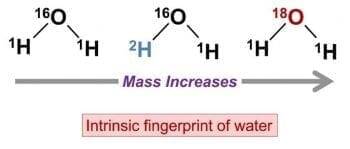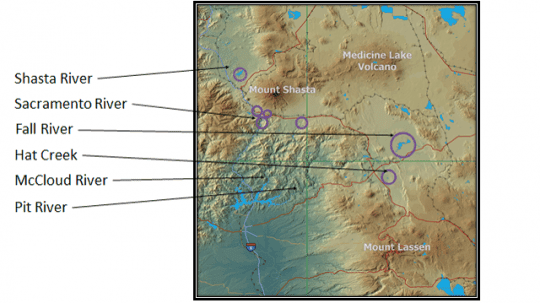California’s Cascade Aquifers: Resilient & Unrecognized Source Waters

McCloud River, by Keith Brauneis.
Despite the importance of California’s source water aquifers, little research has been done. CalTrout is working to change that, studying these aquifers that bubble up from the ground, fed by California’s Cascade mountains. Mount Shasta, Medicine Lake Volcano, and Mount Lassen recharge a vast expanse of underground aquifers, formed by volcanic eruptions millions of years ago. These aquifers store and release large quantities of groundwater to spring-fed rivers, like the McCloud, that supply water for both humans and wildlife. California’s volcanic aquifers supply 14-30% of total water storage, and generates up to 40% of the state’s hydroelectric power. During times of intense drought, groundwater from volcanic aquifers keeps rivers flowing, staving off potentially disastrous losses of downstream fish and agricultural productivity.
These aquifers have never been systematically studied and thus, there is a lack of policy to protect and sustainably manage them. CalTrout is working with top scientists to better understand these source waters.

We’re studying the region using isotopic dating to evaluate the age and origins of the aquifers and their movement. Isotopes can be thought of as environmental tracers; water molecules carry unique fingerprints, based on their isotopic proportions. This will tell us how much water they take in and from where, and how much they store and release. We can use this information to better prove volcanic aquifers’ role supplying California’s water which in turn will influence policy, introduce legal protections, and identify conservation strategies.
For more on the science behind assessing volcanic aquifers, read CalTrout’s publication California’s Cascade Aquifers: Resilient and Unrecognized Source Waters.
[gview file=”https://caltrout.org/wp-content/uploads/2018/03/April-2016-Draft-CCA-White-Paper-1.pdf”]






1 Comment
Here in Pasadena Ca. we have the Raymond Basin Aquifer. Of late the City was going to use the Aquifer water first when allowing block one water which was the cheaper water for customers. There has been contamination over the years of that water and I believe plans were made to blend that water with also contaminated State Water project water. So how do we find out what the real state of the Raymond basin water is and more about recharge efforts. Southern Calif. is where the people are and that is where the water grab is the greatest need other than Agriculture water. The more we develop down here in So. Cal. the more water we will need from those Northern Cal. sources. We really need to limit the amount of development to current water production and wait till other sources can be reasonably and costly transported in the future. Other wise the water wars will continue to be fought and Fish will continue to suffer the outcomes.